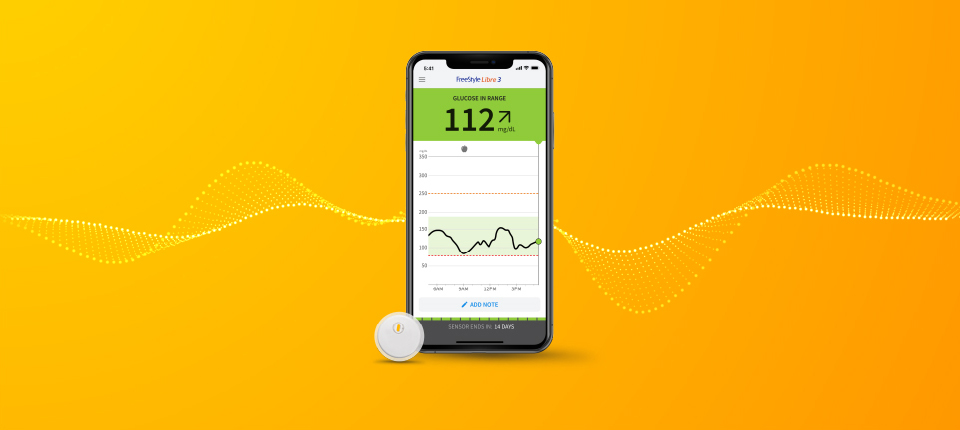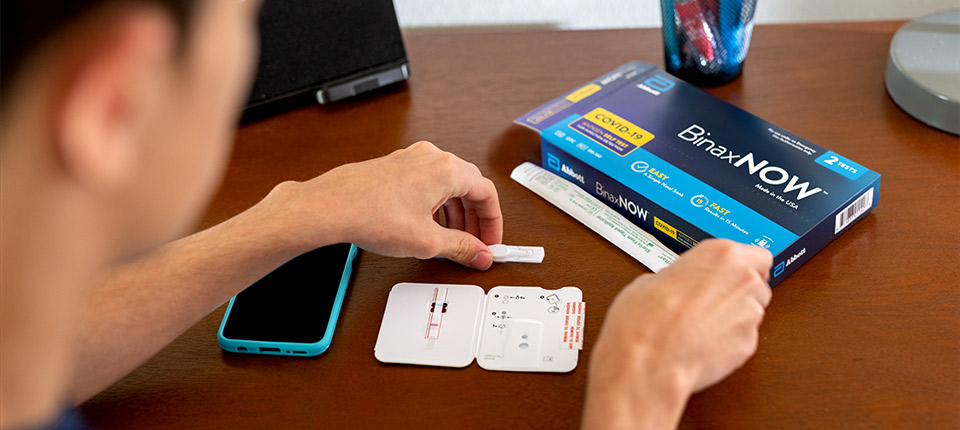By Prescription Only
Abbott Insertable Cardiac Monitors
Rx Only
Brief Summary: Prior to using these devices, please review the Instructions for Use for a complete listing of indications, contraindications, warnings, precautions, potential adverse events and directions for use.
Indications for Use: Abbott ICMs are indicated for the monitoring and diagnostic evaluation of patients who experience unexplained symptoms that may be cardiac-related such as: dizziness, palpitations, chest pain, syncope, and shortness of breath, as well as patients who are at risk for cardiac arrhythmias such as bradycardia, tachycardia, and sinus pauses. Abbott ICMs are also indicated for patients who have been previously diagnosed with atrial fibrillation (AF) or who are susceptible to developing AF. Abbott ICMs are intended to be inserted subcutaneously in the left pectoral region, also described as the left anterior chest wall. Abbott ICMs have not been specifically tested for pediatric use.
Intended Use: Abbott ICMs are intended to help physicians and clinicians monitor, diagnose and document the heart rhythm in patients who are susceptible to cardiac arrhythmias and unexplained symptoms by detecting arrhythmias and transmitting data for review.
Contraindications: There are no known contraindications for the insertion of Abbott ICMs. However, the patient’s particular medical condition may dictate whether or not a subcutaneous, chronically inserted device can be tolerated.
Potential Adverse Events: Possible adverse events (in alphabetical order) associated with the device, include the following: allergic reaction, bleeding, chronic nerve damage, erosion, excessive fibrotic tissue growth, extrusion, formation of hematomas or cysts, infection, keloid formation and migration.
Refer to the User’s Manual for detailed indications for use, contraindications, warnings, precautions and potential adverse events.
An Abbott mobile transmitter is available for patients without their own compatible mobile device
TACTIFLEX ABLATION CATHETER, SENSOR ENABLED
CAUTION: This product is intended for use by or under the direction of a physician. Prior to use, reference Instructions for Use, inside the product carton (when available) or at manuals.sjm.com or eifu.abbottvascular.com for more detailed information on Indications, Contraindications, Warnings, Precautions and Adverse Events.
Indications: The TactiFlex™ Ablation Catheter, Sensor Enabled™ is indicated for use in cardiac electrophysiological mapping and for the treatment of drug refractory recurrent symptomatic paroxysmal atrial fibrillation and concomitant atrial flutter, when used in conjunction with a compatible RF generator and three-dimensional mapping system.
Contraindications: Do not use for any of the following conditions: recent ventriculotomy or atriotomy heart surgery; prosthetic valves; active systemic infection; use in coronary vasculature; myxoma or intracardiac thrombus, transseptal approach with an interatrial baffle or patch; retrograde trans-aortic approach in patients with aortic valve replacement; patients unable to receive heparin or an acceptable alternative to achieve adequate anticoagulation.
Warnings: The temperature data transmitted by the sensor in this catheter is representative of the irrigated electrode only and does not provide tissue temperature data. Application of RF energy on the left atrial posterior wall exceeding 40 W in power, or use of contact force ≥15g, increases the risk of esophageal perforating complications including atrio-esophageal fistula and death. Application of RF energy outside of the power and duration recommendations may increase the likelihood of steam pop occurrence. Patients undergoing septal accessory pathway ablation are at risk for complete AV block which requires the implantation of a permanent pacemaker. Implantable pacemakers and implantable cardioverter/defibrillator (ICDs) may be adversely affected by RF current. The combination of intracoronary placement of the ablation catheter and RF energy application has been associated with myocardial infarction and death. Inspect tubing, connections, and saline irrigation for air bubbles prior to and throughout its use in the procedure. Air or bubbles in the saline irrigation may cause emboli, potential injury, or fatality. Increased contact force may increase the risk for perforation during manipulation of the catheter. Contact force in excess of 20 g may not significantly change the characteristics of lesion formation. Contact force accuracy above 50 g has not been established. Caution should be taken when placing lesions in the proximity of the specialized conduction system. To avoid thromboemboli, intravenous heparin should be used when entering the left heart during ablation. Always maintain a constant saline irrigation flow to prevent coagulation within the lumen of the catheter. When using the catheter with conventional EP lab system (using fluoroscopy to determine catheter tip location) or with a 3D navigational system, careful catheter manipulation must be performed, especially when used in combination with a long sheath, in order to avoid cardiac damage, perforation, or tamponade.
Precautions: Always straighten the catheter tip before insertion or withdrawal. If irrigation flow is interrupted, immediately inspect and re flush the catheter outside of the patient. Re-establish irrigation flow prior to placing catheter in the body. Irrigated ablation systems have been shown to create larger lesions than standard radiofrequency ablation catheters. Be careful when ablating near electrically vulnerable, thin walled, or other arterial structures.
Potential Adverse Events: Potential adverse events include, but are not limited to, cardiovascular related complications, including hematoma, pericardial effusion and infection. More serious complications are rare, which can include damage to the heart or blood vessels; blood clots (which may lead to stroke); tamponade; severe pulmonary vein stenosis; heart block; myocardial infarction; esophageal fistula, or death.
AVEIR LEADLESS PACEMAKER SYSTEM
Rx Only
Brief Summary: Prior to using these devices, please review the Instructions for Use for a complete listing of indications, contraindications, warnings, precautions, potential adverse events and directions for use
Indications: The Aveir™ Leadless Pacemaker system is indicated for patients with significant bradycardia and:
- Normal sinus rhythm with rare episodes of A-V block or sinus arrest
- Chronic atrial fibrillation
- Severe physical disability
Rate-Modulated Pacing is indicated for patients with chronotropic incompetence, and for those who would benefit from increased stimulation rates concurrent with physical activity.
Intended Use: The Aveir™ Leadless Pacemaker (LP) is designed to provide bradycardia pacing as a pulse generator with built-in battery and electrodes for implantation in the right ventricle. The LP is intended to provide sensing of intrinsic cardiac signals and delivery of cardiac pacing therapy to the target patient population.
The Aveir™ Delivery Catheter system is intended to be used in the peripheral vasculature and the cardiovascular system to deliver and manipulate an LP. Delivery and manipulation includes implanting an LP within the target chamber of the heart.
Contraindications: Use of the Aveir™ Leadless Pacemaker is contraindicated in these cases:
Use of any pacemaker is contraindicated in patients with a co-implanted ICD because high-voltage shocks could damage the pacemaker and the pacemaker could reduce shock effectiveness.
Single-chamber ventricular demand pacing is relatively contraindicated in patients who have demonstrated pacemaker syndrome, have retrograde VA conduction, or suffer a drop in arterial blood pressure with the onset of ventricular pacing.
Programming of rate-responsive pacing is contraindicated in patients with intolerance of high sensor-driven rates.
Use is contraindicated in patients with an implanted vena cava filter or mechanical tricuspid valve because of interference between these devices and the delivery system during implantation.
Persons with known history of allergies to any of the components of this device may suffer an allergic reaction to this device. Prior to use on the patient, the patient should be counseled on the materials (listed in Product Materials section in IFU) contained in the device and a thorough history of allergies must be discussed.
Adverse Events: Potential complications associated with the use of the Aveir™ Leadless Pacemaker system are the same as with the use of single chamber pacemakers with active fixation pacing leads including, but not limited to: Cardiac perforation, Cardiac tamponade, Pericardial effusion, Pericarditis, Valve damage and/or regurgitation, Heart failure, Pneumothorax/hemothorax, Cardiac arrhythmias, Diaphragmatic/phrenic nerve stimulation / extra-cardiac stimulation, Palpitations, Hypotension, Syncope, Cerebrovascular accident, Infection, Hypersensitivity reaction to device materials, medications, or direct toxic effect of contrast media on kidney function, Pacemaker syndrome, Inability to interrogate or program the LP due to programmer or LP malfunction, Intermittent or complete loss of pacing and/or sensing due to dislodgement or mechanical malfunction of the LP (non-battery related), Loss of capture or sensing due to embolization or fibrotic tissue response at the electrode, Increased capture threshold, Inappropriate sensor response, Interruption of desired LP function due to electrical interference, either electromyogenic or electromagnetic, Battery malfunction/ premature battery depletion, Device-related complications (Premature deployment, Device dislodgement/embolization of foreign material, Helix distortion), Death.
As with any percutaneous catheterization procedure, potential complications include, but are not limited to: Vascular access complications (such as perforation, dissection, puncture, groin pain), Bleeding or hematoma, Thrombus formation, Thromboembolism, Air embolism, Local and systemic infection, Peripheral nerve damage, General surgery risks and complications from comorbidities (such as hypotension, dyspnea, respiratory failure, syncope, pneumonia, hypertension, cardiac failure, reaction to sedation, renal failure, anemia, and death)
MAT-2115646 v1.0








FOLLOW ABBOTT